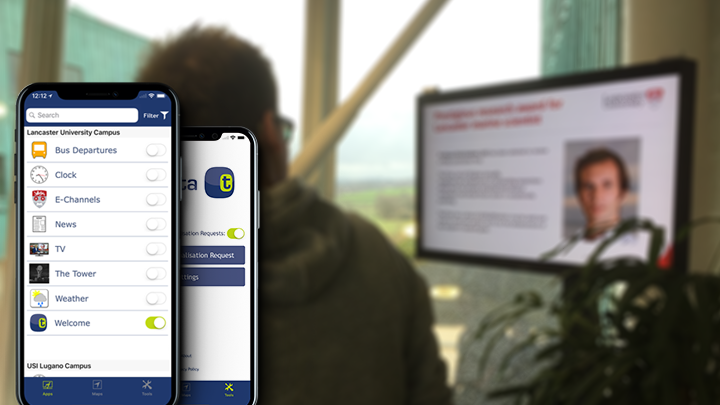Archive, News
Project creates environments that adapt to a user’s presence
By Mateusz Mikusz Research Associate
The report focuses on a system that allows users to to express preferences for the kinds of content they wish to see on nearby public displays. Users can use a mobile application to choose between a set of content such as personalised travel information, weather forecasts for their preferred location, personalised media and news, or social media.
The mobile phone application utilises Bluetooth Low Energy beacons that have been attached to over 65 displays on the campus at Lancaster University to detect viewers’ proximity to displays. Upon detecting the viewer’s proximity to a display, the mobile phone application automatically sends a request for changing the content shown on the nearby display in accordance to the viewer’s specified preferences — without requiring the viewer to actively interact with their phone or the display.
The researchers have implemented an architecture with the goal of protecting the viewer’s privacy by minimising the level of data collection (e.g. through the use of non personal identifiers). The display personalisation system is in daily operation on the main campus at Lancaster University and currently has over 140 users — and a daily growing user base.
The development of the display personalisation system has been a joint effort between PETRAS and the EPSRC-funded project PACTMAN (under grant number EP/N028228/1) projects and involves colleagues from the University of Manchester, Edinburgh College of Arts, and the University of Essex.
We hope to alert you more exciting news from our projects in the future!

